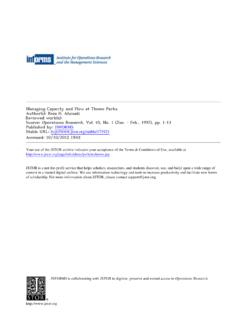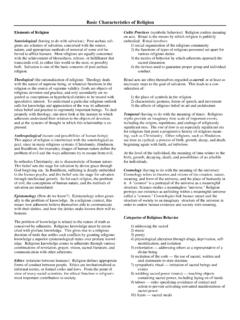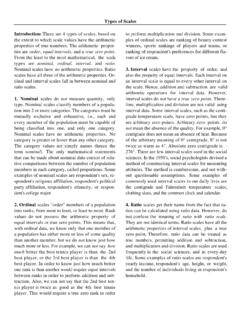Transcription of Factors that undermine Internal and External Validity1
1 Factors that undermine Internal and External Validity1 Internal Validity whether the independent variable really affects the dependent History: specific events occurring during the measurement phase of the study which, inaddition to the independent variable, might affect the dependent Maturation: processes influencing the dependent variable that take place over time, such asgrowing older, hungrier, more tired, loosing motivation, Measurement: the effects of the measuring devices themselves, independent of what theypurport to Instrumentation: changes in the measurement devices during a study which affect thedependent Statistical regression: the natural tendency of people who are selected for a sample becausethey measure extreme on some variable, to measure less extreme on subsequent Selection: the effect of selecting respondents in different groups for different Mortality: loss of sample members due to nonrandom causes during a study, such as refusalsto answer questions, or withdrawing from a study before it's Interaction: between various combinations of the above problems that mimics the effects ofthe independent variable(s).
2 External Validity whether one can generalize from the results of the study to a Sampling bias: the sample was chosen in such a manner that , as a group, it is different in oneor more ways from the population from which it was drawn. Usually, random samplingmethods are used to insure against this Interaction: interaction between various aspects of the study, such as different questions ona questionnaire, or questions interacting with aspects of their presentation that affect thedependent variable for the sample group, but because these conditions are not present in thepopulation outside the sample group, the effect will not be present, preventing one fromgeneralizing from the Multiple treatments or measurements: the effect of exposing research subjects to repeatedtreatments or measurements.
3 One can't erase past research effects on subjects, hence they arecontaminated by any previous participation in studies. This is especially problematic whenresearching students because they are frequent participants in studies. 1 The information this document is based on is from Experimental and Quasi-experimental Designs for Research, by Donald T. Campbell andJulian C. Stanley, Chicago: Rand McNally and Co., 1966.



